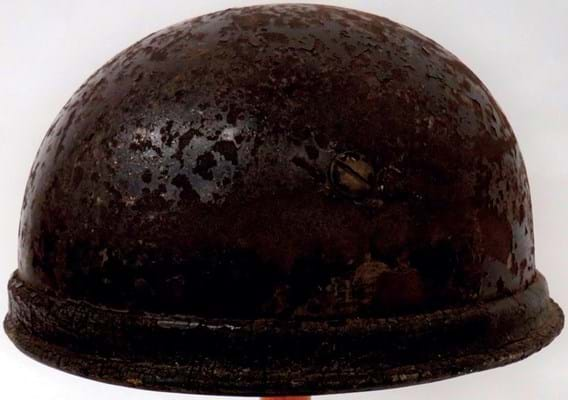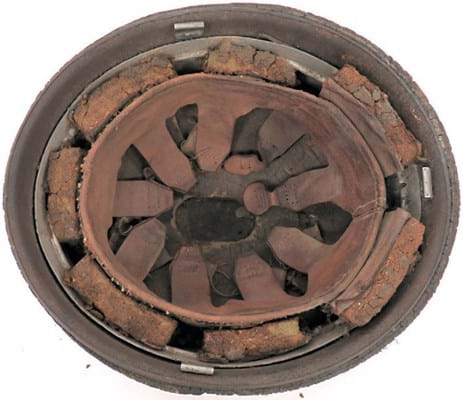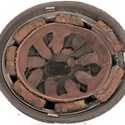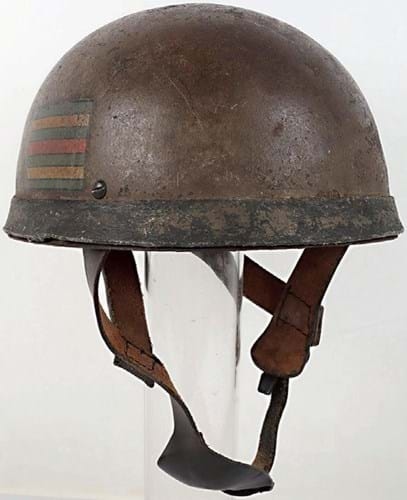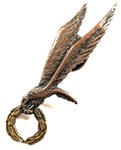Paratrooper gear is always likely to make collectors of British Second World War militaria leap in with a bid.
When that innate appeal is coupled with significant rarity you end up with the sort of price achieved at Bosleys & Marlows (22% buyer’s premium) on September 20 for a helmet.
Consigned as part of a box of military helmets, which had lain forgotten in a shed for 30 years, this helmet was identified by the auction house as “one of the most elusive patterns for collectors to find, the pioneering P Type British airborne forces jump helmet dating from 1941”.
Estimated at £1200-1800 at the Stafford sale, it took £10,000 from a private overseas collector bidding online. It was the only example the auction house had “seen or indeed sold in our 30 years”, said Steven Bosley.
He added: “In those dark days of the winter of 1940, the War Department was desperately trying to catch up on the success enjoyed by Hilter’s Fallschirmjäger airborne troops during the Blitzkrieg of 1940. The rapid development of forming the new Parachute Regiment and their new specialist equipment led to the company of Briggs Motor Bodies of Dagenham to create a new steel helmet.”
Part of the German airborne success was the helmet design used by their elite airborne troops (parachute and glider), and captured German examples were examined.
The P type entered service in early 1941 and quickly became known as the Duckbill pattern because of the wide rubber edge banding which terminated with a ‘bill’ to the rear. The helmet was used on the Bruneval raid on a German radar station and although the helmet was quickly succeeded by the more common HSAT pattern in 1942, these original helmets, Bosley adds, “were kept by some, possibly as a lucky charm and with the removal of the hated rear bill continued to see combat in north Africa and Operation Market Garden – the Battle for Arnhem”.
This particular example retains the wide rubber edge to the shell. The lining is clearly stamped with the maker and date 1941 and is the early nine-tongue variant which in many cases was quickly replaced with the new HSAT pattern in 1942.
Bosley said: “To give readers an indication of the scarcity of this helmet, the number produced was less than 1000 and we believe this is the first example to be sold on the open market in the last 30 years.”
Later version
Following the P Type, the Helmet Steel Airborne Troops (HSAT) version appeared, then a Mk I and Mk II.
A fibre-rimmed Mk I example from 1942 marked for BMB - Briggs Motor Bodies - was offered at Carlisle auction house Laidlaw (20% buyer’s premium) on September 29 guided at £1500-2500.
The size 7 3/8 helmet, retaining its original factory-applied green paint finish, featured a Royal Army Medical Corps painted flash. It sold for £4200.
Hotly engaged
In November 1941, the 2nd Battalion South Staffordshire regiment was converted to a glider infantry role, serving as part of the 1st Airlanding Brigade in the 1st Airborne Division.
After suffering heavy casualties in Sicily, they took part in Operation Market Garden – Arnhem – in September 17-25, again taking lots of punishment and earning two Victoria Crosses.
A ‘superb example’ of a 1942 dated British fibre rim pattern airborne forces steel helmet on offer at C&T (22% buyer’s premium) in Kent on October 11, which retained nearly all of the original combat paint finish to the exterior of the shell, came complete with decal regimental colour formation sign for the 2nd Bn South Staffs. Estimated at £2000- 4000, it sold for £3500.


